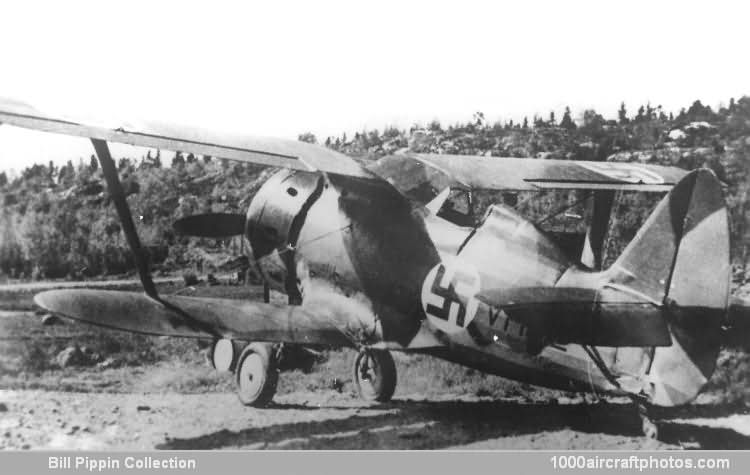03/31/2013. Remarks by Johan Visschedijk: "Despite an international trend away from the biplane configuration for fighters by the rnid 1930s, the Soviet Air Force vigorously demanded continuation of such warplanes, and, in 1937, one of Polikarpov's principal team leaders, Aleksei Ya Shcherbakov, was assigned the task of developing a more potent fighter biplane. Assisted by Mikhail Gurevich, Shcherbakov created the I-153 (rarely referred to as I-15ter), prototype trials commencing in summer 1938.
The basic structure of the I-15bis (also referred to as I-152) was extensively restressed, the Clark YH wing profile was retained, but configuration reverted to the "gulled" upper wing - resulting in the sobriquet of Chaika (Gull, as the I-15 was also named) being resurrected - and, as a concession to modernity, manually-retractable main landing gear members were introduced.
Initially, the 775 hp M-25V engine was retained, armament remaining four 0.30 in (7.62 mm) guns, but comparatively early in the production run the 1,000 hp Shvetsov M-62 engine was standardized, boosting max speed from 258 mph (415 kmh) at 9,843 ft (3,000 m) to 280 mph (444 kmh) at 15,090 ft (4,600 m). Some aircraft were fitted with a quartet of 0.50 in (12.7 mm) guns (the I-153BS) and one, experimentally, with twin synchronized 0.787 in (20 mm) cannon (the I-153P).
Production deliveries began during the early spring of 1939, and continued until late 1940, 3,437 examples being produced. Ninety-three were supplied to the Chinese Central Government early in 1940, and the I-153 remained in first-line service until well into 1943.
During the Finnish-Soviet Winter War (November 30, 1939 - March 13, 1940), and Continuation War (June 25, 1941 - September 19, 1944), respectively eight and three I-153s were captured after they force landed in Finland. An additional nine I-153s were purchased from Germany on November 18, 1942, while yet another one was handed over by the Germans on August 27, 1943, bringing the total I-153s in Finnish service to 21. These aircraft were re-armed with four 0.303 in (7.7 mm) Browning M.39 machine guns and a BBC AAK-1 gun sight was installed.
The pictured aircraft was captured during the Winter War and went into service with LLv 14. It flew 162.5 hours before it was lost on July 9, 1942, after an engine fire the pilot force-landed the aircraft at sea near the Sumori Island (Gulf of Finland) and the aircraft sank."
